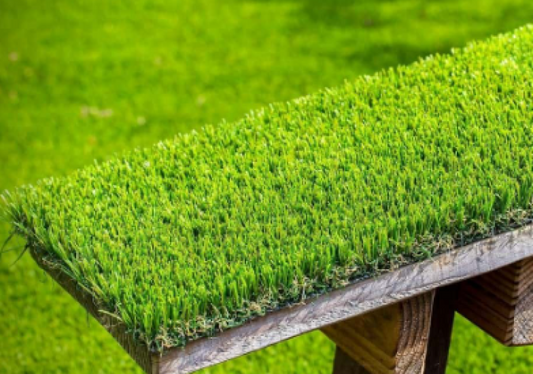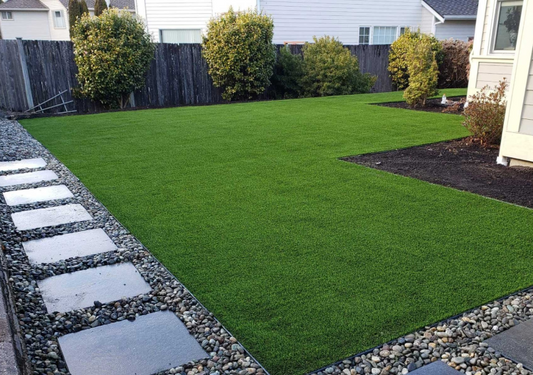When creating a beautiful and functional outdoor space, homeowners often face the choice between artificial turf and natural grass. Both options have their unique advantages and drawbacks. In this blog, we’ll explore the differences between artificial turf and natural grass to help you decide which is the best fit for your lawn.
Maintenance
Artificial Turf
One of the most significant advantages of artificial turf is its low maintenance requirements. Once installed, it requires minimal upkeep. There’s no need for mowing, watering, or fertilizing. Simply brush away debris and occasionally rinse the turf to keep it clean and looking fresh.
Natural Grass
Natural grass, on the other hand, demands regular maintenance to stay healthy and green. This includes frequent mowing, watering, fertilizing, and weeding. Additionally, natural grass may require aeration and pest control treatments, making it more time-consuming and labor-intensive to maintain.
Water Usage
Artificial Turf
Artificial turf is a water-efficient option. It does not require any watering to stay green, which is particularly beneficial in regions prone to drought or water restrictions. This can result in significant water savings and lower utility bills.
Natural Grass
Natural grass lawns need substantial amounts of water, especially during hot and dry periods. Keeping a natural grass lawn lush and green can be challenging and expensive in areas with limited water resources.
Durability and Longevity
Artificial Turf
Artificial turf is designed to withstand heavy use and harsh weather conditions. It is highly durable and can handle heavy foot traffic, pets, and play activities without showing signs of wear and tear. With proper care, artificial turf can last 15-20 years or more.
Natural Grass
Natural grass is more susceptible to damage from foot traffic, pets, and extreme weather conditions. Heavy use can lead to bare patches and soil compaction, while drought or excessive rain can negatively affect its health. Natural grass may require periodic reseeding or sod replacement to maintain its appearance.
Environmental Impact
Artificial Turf
Artificial turf has both positive and negative environmental impacts. On the positive side, it reduces water usage and eliminates the need for harmful pesticides and fertilizers. However, artificial turf is made from synthetic materials that are not biodegradable, and its production and disposal can have environmental consequences.
Natural Grass
Natural grass contributes positively to the environment by absorbing carbon dioxide and releasing oxygen. It also supports biodiversity and provides a habitat for various organisms. However, maintaining natural grass often involves using water, fertilizers, and pesticides, which can have negative environmental impacts.
Aesthetic Appeal
Artificial Turf
Artificial turf maintains a consistent, lush green appearance year-round. It is available in various shades and textures to closely mimic natural grass. This makes it an attractive option for homeowners who want a flawless lawn without the seasonal variations of natural grass.
Natural Grass
Natural grass has a unique beauty that many people appreciate. It offers a soft, cool surface and a natural aroma that artificial turf cannot replicate. However, its appearance can vary with the seasons and environmental conditions, sometimes looking less than perfect.
Cost
Artificial Turf
The initial installation cost of artificial turf can be higher than that of natural grass. However, the long-term savings on water, lawn care products, and maintenance can offset the initial investment. Over time, artificial turf can prove to be a cost-effective solution.
Natural Grass
Natural grass is generally less expensive to install initially. However, the ongoing costs of water, fertilizers, pesticides, and maintenance equipment can add up over time. The total cost of maintaining a natural grass lawn can exceed that of artificial turf in the long run.
 Reviews
Reviews 




